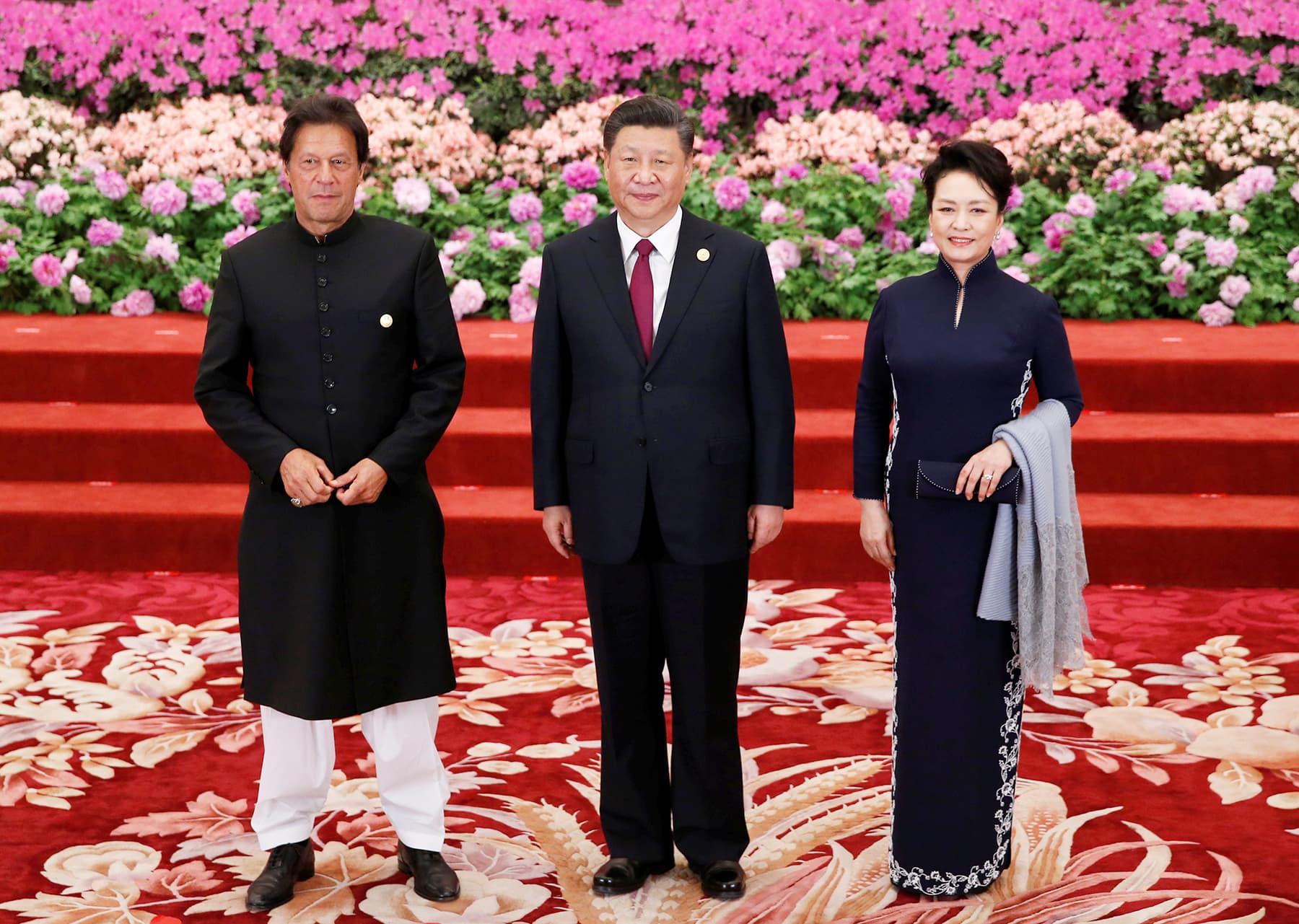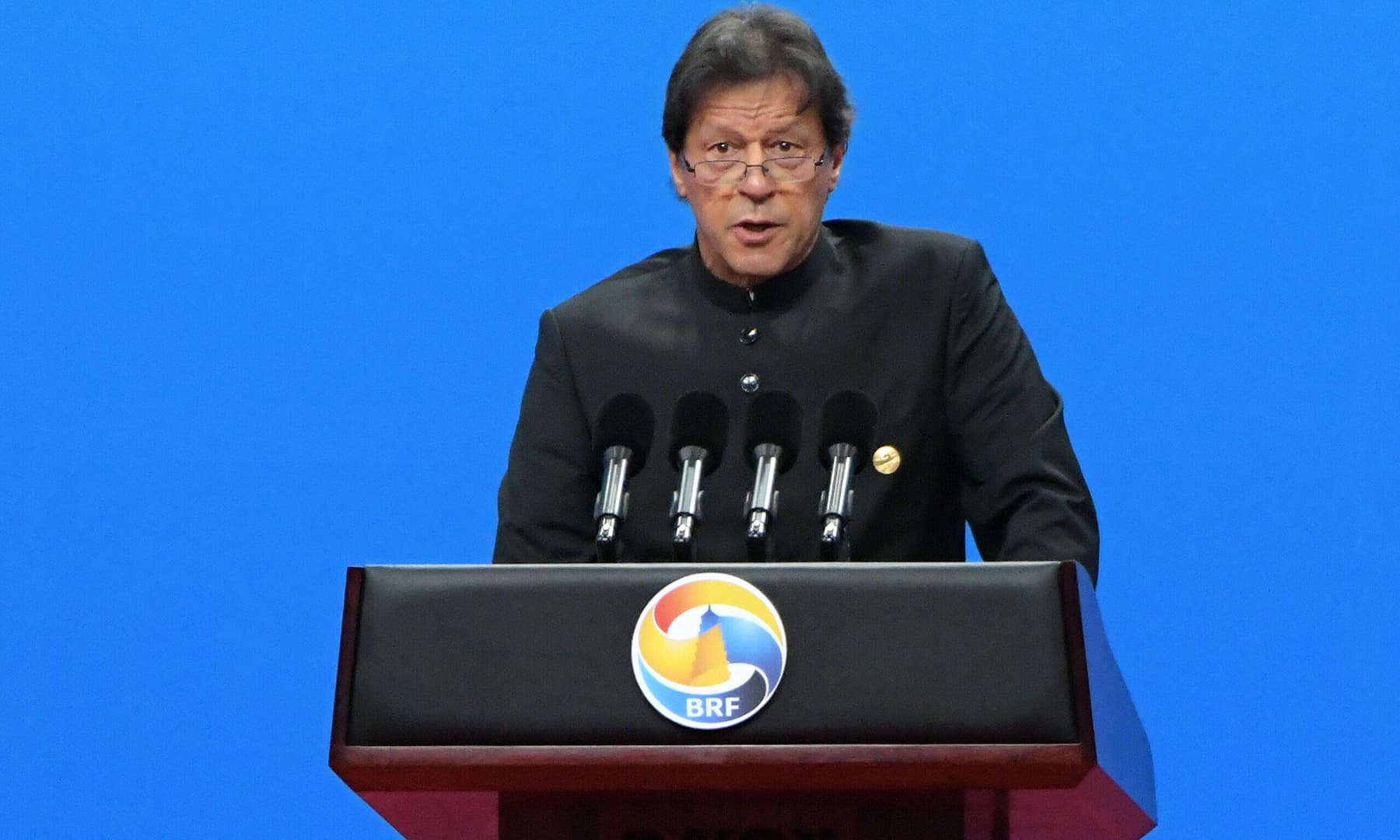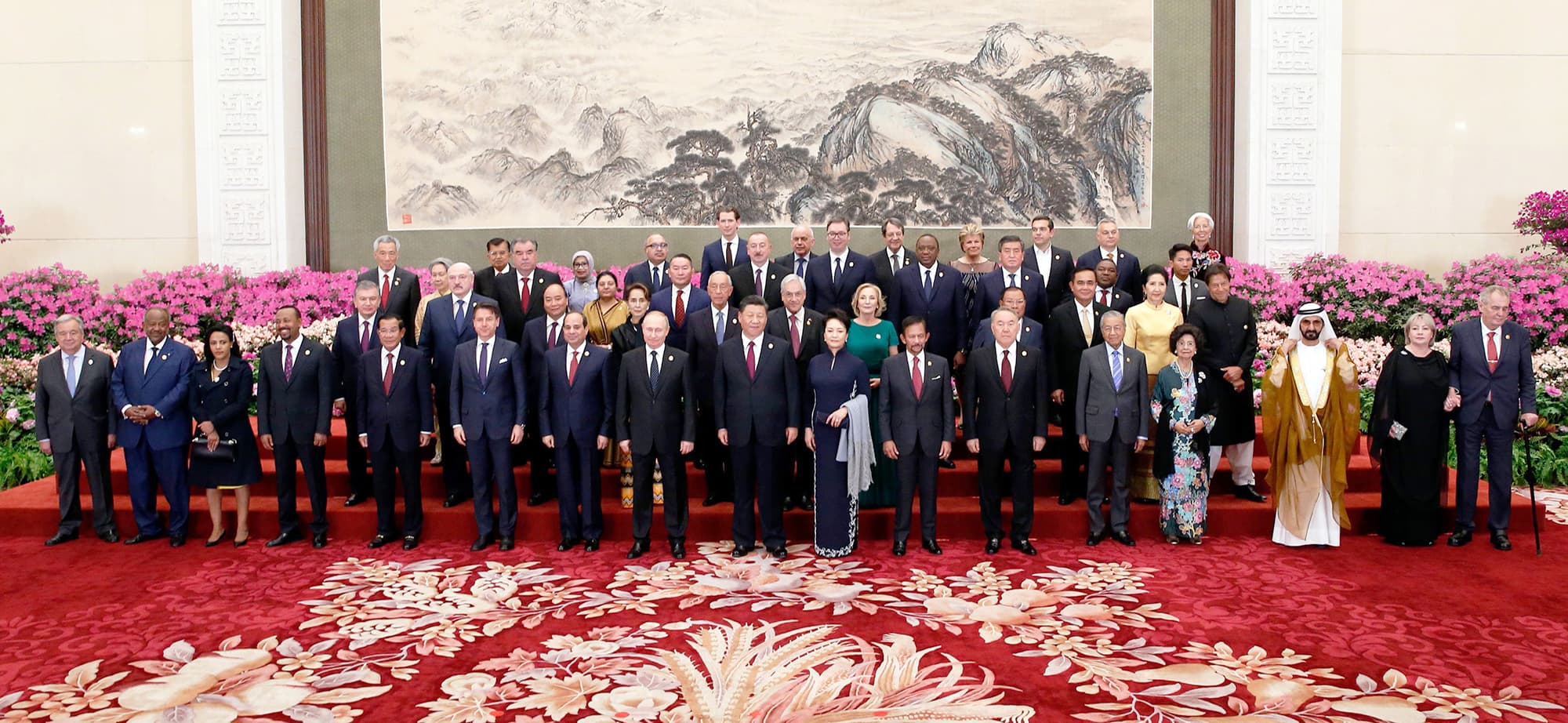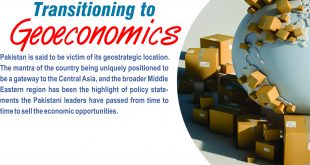Second Belt and Road Forum
Key Takeaways
Magazine Desk
The second Belt and Road Forum for International Cooperation was held in Beijing from April 25 to 27 under the theme “Belt and Road Cooperation: Shaping a Brighter Shared Future”. The forum consisted of the opening ceremony, the Leaders’ Roundtable, the high-level meeting, 12 thematic forums and a CEO conference. 40 leaders attended the roundtable, including heads of state and government from 38 countries including China, United Nations (UN) Secretary General and Managing Director the International Monetary Fund (IMF). Over 6,000 foreign guests from 150 countries and 92 international organizations participated in the forum. Prime Minister of Pakistan, Imran Khan, was one of the seven leaders to address the inaugural session. In his address, PM Khan called for greater attention to tackling climate change and poverty as Pakistan and China enter the next phase of the China-Pakistan Economic Corridor (CPEC).
The Second Belt and Road Forum took place in April in Beijing, featuring participants from more than 150 countries. The BRI Summit served as a forum for political and economic leaders to sell their vision for the initiative’s ongoing projects. The Chinese government has notably shifted its discursive focus since the launch of the Belt and Road Initiative, and is now downplaying fears of debt encumbrance, corruption, and environmental degradation. But this should not distract us from the key fact that participation in the BRI continues to grow, including from traditional U.S. allies in Asia and Europe. China’s efforts to create a continental logistics network that brings Central and Southeast Asian nations further into its sphere of influence are continuing apace, with all of the strategic implications that expansion implies.
The Belt and Road Initiative was first announced in 2013 by Chinese President Xi Jinping with a great deal of fanfare. The project’s aim was to expand trade within and outside of Asia with a vast network of railways, pipelines, ports, and highways. In addition to facilitating trade, China hoped that the project would expand the use of the renminbi for international contracts. Since 2013, the costs of many projects have continued to expand, and domestic opposition to the initiative in some countries has grown. Some politicians have expressed fear that Chinese loans will be used as leverage to gain control over the resources and policies of host nations. As is the case with many development projects, the vast sums offered by the BRI have also provided new money-making opportunities for corrupt leaders. At the same time, local and international monitors have pointed out the serious ecological impacts that these massive development projects will have on local ecosystems. These concerns have already had some impact on support for the BRI in Asia: Indonesian President Joko skipped this year’s summit to avoid being seen as too-beholden to Chinese interests in Indonesia.
In line with its typical diplomatic strategy, China is now opting for a softer approach. Xi Jinping’s statements at this year’s summit repeatedly emphasized the importance of sustainability, consultation with host countries, and improving standards of living for those affected by development projects. This marks a shift from 2013’s somewhat-triumphalist rhetoric, with China now clearly attempting to assuage the fears of its partners and smooth the way for continued investment. The rhetoric may also reflect a realization among Chinese leadership that funding for BRI projects may need to slacken as China’s slowdown continues and fears of a global recession loom large. Whether this rhetoric will actually translate into any meaningful changes in the way that BRI projects and funding are managed is another question entirely.
Despite these hiccups, state support for the Belt and Road Initiative continues to expand. Eight additional heads of state attended this year’s conference versus the previous one in 2017. Malaysia’s Prime Minister signed onto the initiative, sidestepping previous hesitations, and Italy also signed on despite German opposition. A number of other important players – including Austria, South Korea, Switzerland, and Singapore – have all signed on for some degree of participation and market integration. Other nations like Australia, Canada, France, and Japan have signed deals to co-fund infrastructure projects in which they have an interest. The continued growth in participation in the BRI from both host and partner countries suggests that the project will continue to gather steam in spite of the hurdles listed above. While many governments will have to balance the perception that they are too responsive to Chinese interests, the funding on offer is too important for most to pass up.

What will be the strategic and economic implications if the Belt and Road Initiative continues to progress? It’s hard not to see certain parallels between China’s infrastructure projects and the developmental strategies pursued by Western empires. In the late 19th and early 20th centuries, European colonial powers created massive infrastructure projects like railways to enable their economic exploitation of their colonies in Africa and Asia. There are significant differences, of course. The countries receiving BRI investments are all formally independent and politically sovereign. Moreover, China’s penetration of its partners with military bases is nowhere near as extensive as that of yesteryear’s European powers or today’s United States. Functionally, however, the BRI may prove remarkably similar for China’s partners in Central and Southeast Asia. A simple examination of a map of proposed BRI projects shows a clear focus on linking the Central and Southeast Asian economies to China’s. These projects will allow capital and manufactured goods to flow from China to peripheral economies, with raw materials and less-complex goods flowing in the other direction.
All of this is complicated by the fact that other developed nations are also taking part in the Belt and Road Initiative to pursue their own commercial objectives. But it is undeniable that the infrastructural links being developed by the BRI will deepen the dependence of Central and South Asian nations on China, both as a market and as a financier. In this sense, China is only beginning to step into a role long occupied by Western imperialist powers like the United States. What remains to be seen is whether countries like Myanmar and Tajikistan will be able to escape the relationships of dependency that have characterized the economic domination of the Global South by the West. What is certain, for now, is that China’s rise as a major power capable of generating its own economic periphery is continuing rapidly and unlikely to end anytime soon.
Boxes
Space Exploration: A new dimension of Pakistan-China Cooperation
Upon the conclusion of the second Belt and Road Forum in Beijing, Pakistan and China signed a space exploration agreement, which will ensure the peaceful use of outer space. It is also expected that China National Space Administration (CNSA) and Pakistan Space and Upper Atmosphere Research Commission (SUPARCO) will establish a space committee for future collaborative projects. Such agreements will not only enhance ties between the two countries, but will also provide Pakistan a chance to advance in technology.
AS newly signed space exploration agreement between China and Pakistan on manned space missions manifests their more profound cooperation on the peaceful use of outer Space. The agreement, marking that cooperation between the two neighbours in space exploration has entered a new phase, China Economic Net reported, quoting a statement issued by the China National Space Administration (CNSA).The agreement inked during the recent visit of Prime Minister Imran Khan will serve as a high-level foundation for cooperation in space science and exploration. Both nations will conduct scientific and technological experiments, astronaut training, along with manned space applications and achievement transformation. The CNSA and the Pakistan Space and Upper Atmosphere Research Commission will establish a China-Pakistan space committee chaired by top officials from both sides to address future collaborative issues.

Since Pakistan is China’s all-weather friend, China is willing to provide the know-how to foster Pakistan’s technological development on the use of outer space, Lan Jianxue, said an associate research fellow at the China Institute of International Studies.”China-Pakistan space cooperation will help Pakistan in terms of satellite monitoring of natural disasters and agricultural production, land and resources surveying, and waste handling in a microgravity environment,” China will also benefit from the cooperation, including for commercial applications of space technology, investment security and counter-terrorism. Along with this The Chinese Academy of Sciences launched the Silk Road Environment Program, under which scientists from countries along the Belt and Road study the pathways and scientific solutions of green Silk Road development and Pakistan is the key member of this Forum. Adding to that The Belt and Road Publishing Cooperation was co-founded by China and international publishers, academic institutions and professional associations of relevant countries and regions. The Belt and Road Initiative Documentary Consortium was jointly founded by China and relevant countries including Pakistan. The Belt and Road News Network was jointly developed by the People’s Daily and media organizations from relevant countries. The International Communication Award on the Belt and Road was launched. Furthermore, The China Earthquake Administration, together with its counterparts from 13 countries and relevant international organizations including Armenia, Mongolia, Russia, Pakistan, Kazakhstan, the Asian Seismological Commission and the African Seismological Commission, jointly established the Working Mechanism for the Belt and Road Earthquake Risk Reduction Cooperation. The Ministry of Agriculture and Rural Affairs of China and the Ministry of National Food Security and Research of Pakistan jointly released the Statement of Intent for Cooperation on Promoting Specification-setting for Pesticide Quality under the Belt and Road Initiative.
The Ministry of Science and Technology of China announced the Belt and Road talents exchange program, supporting 5,000 talents from China and BRI partner countries in innovation exchange and cooperation in the next five years. Beijing will initiate the experience sharing program for Belt and Road partner countries, inviting 10,000 representatives to China from these countries in the next five years, including those from political parties, political organizations, think tanks and social organizations, as well as senior political figures and scholars. The Chinese government continues to implement the “Silk Road” Chinese Government Scholarship Program and increases scholarships for candidates pursuing master’s and PhD degrees at Chinese institutes of higher learning. In 2018, China sent two Pakistan satellites into orbit. The PRSS-1, Pakistan’s first optical remote sensing satellite, and the PakTES-1A, a smaller observation craft, were both lifted into space by China’s Long March-2C carrier rocket. The current agreement signifies that their cooperation is not limited to infrastructure and resources, it also concerns technology and innovation.
List of China-Pak Agreements at BRF
- CPFTA-II
- Rashakai SEZ Concession Agreement
- Declaration of Completion of Preliminary Design Phase-I on Up gradation of ML1
- China-Pakistan Economic & Technological Cooperation Agreement
- MOU on China Pakistan Economic Corridor (CPEC) Social Economic Cooperation
- The Red Cross Society of China continues with the implementation of the China-Pakistan First Aid Corridor Program in Pakistan.
- The Chinese government signed transport cooperation documents with the government of Pakistan
 Jahangir's World Times First Comprehensive Magazine for students/teachers of competitive exams and general readers as well.
Jahangir's World Times First Comprehensive Magazine for students/teachers of competitive exams and general readers as well.



